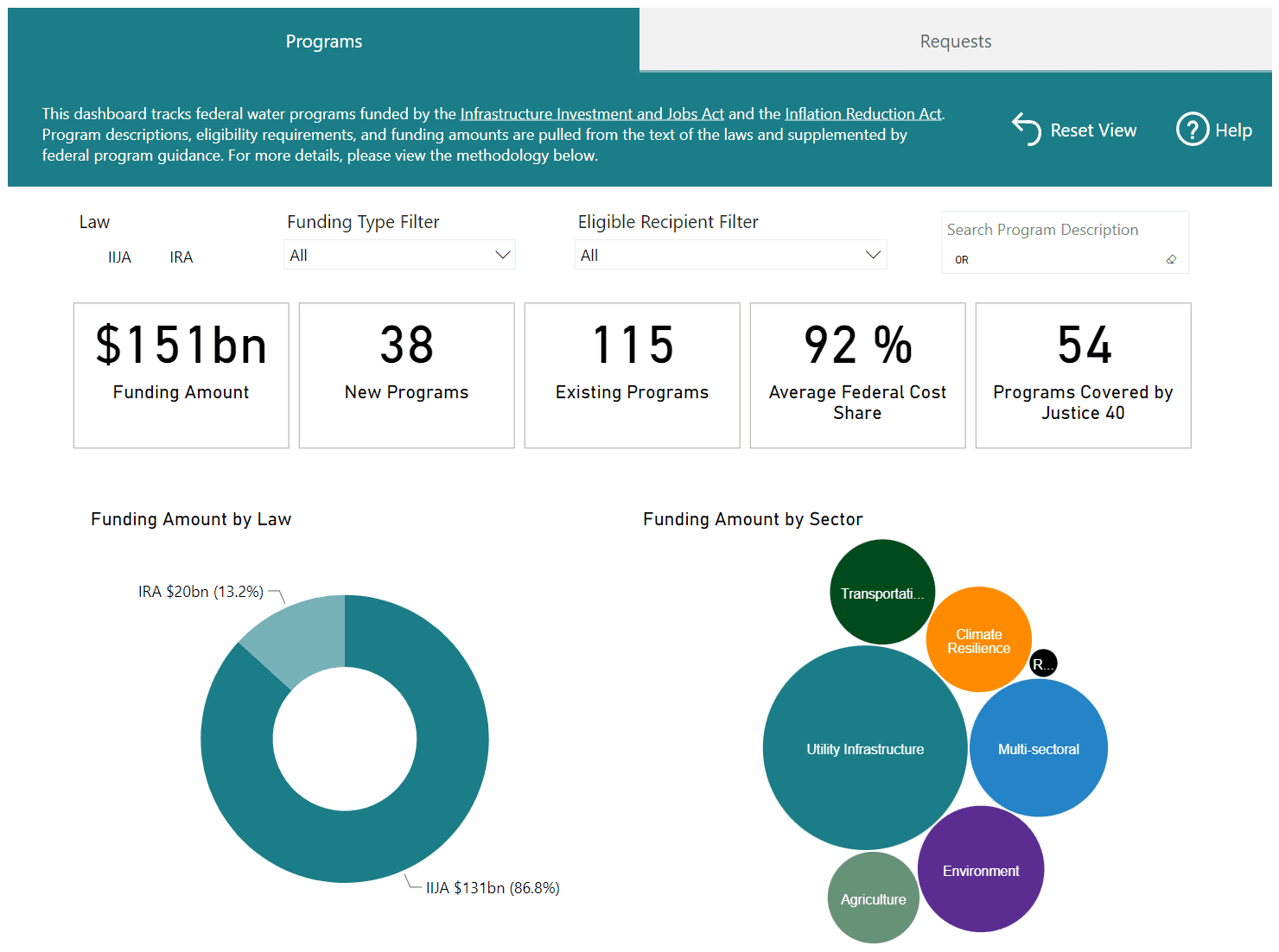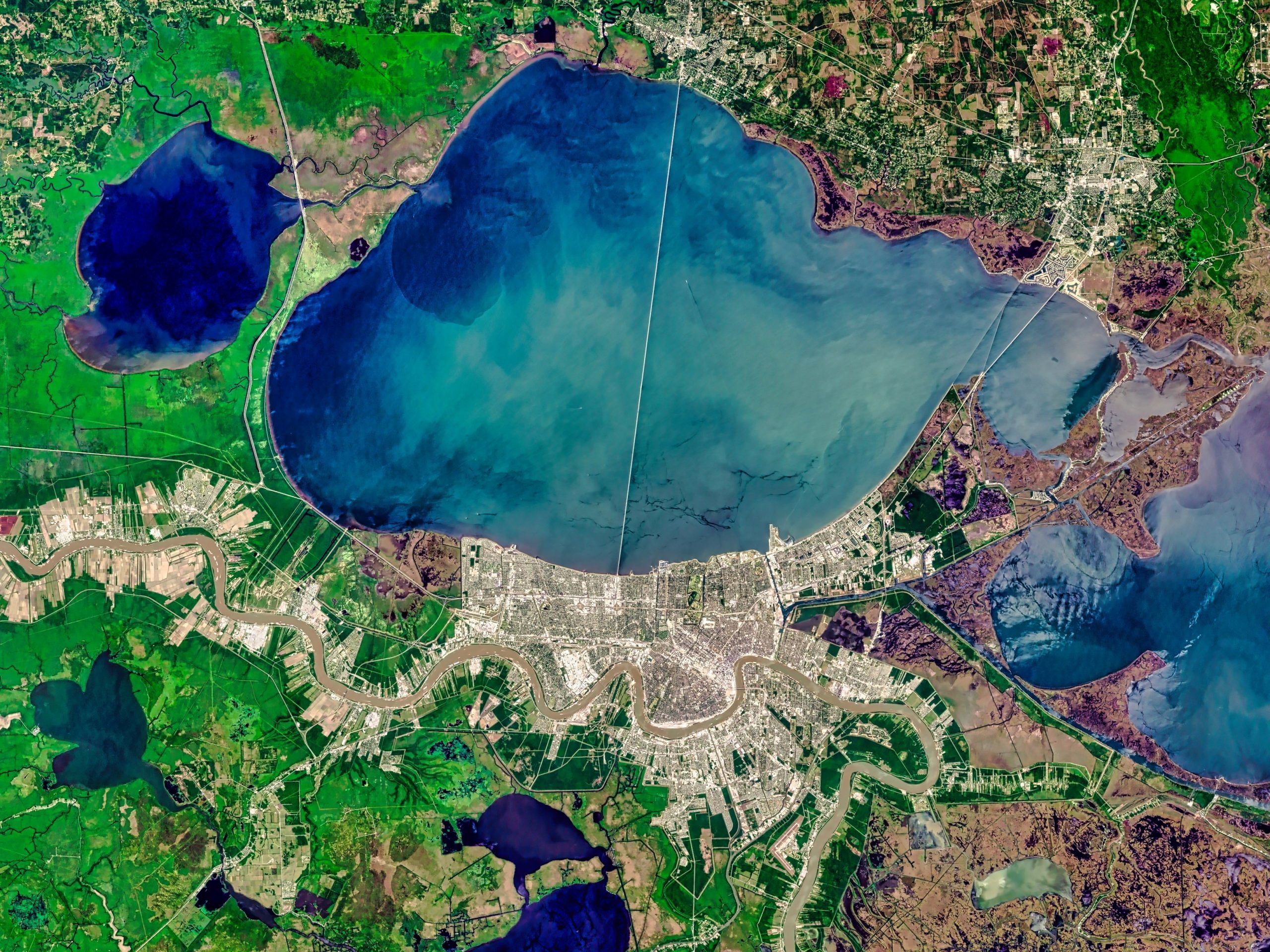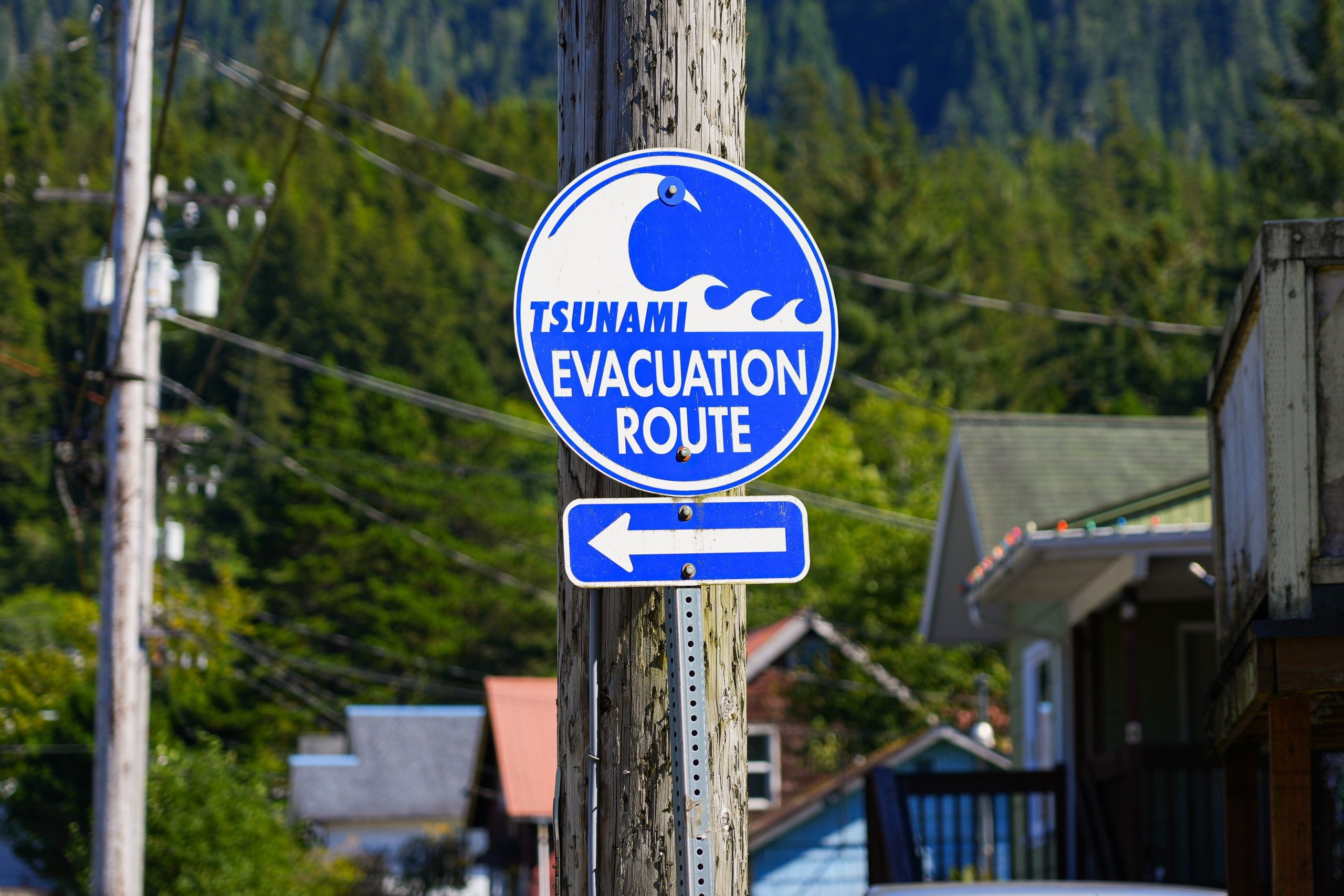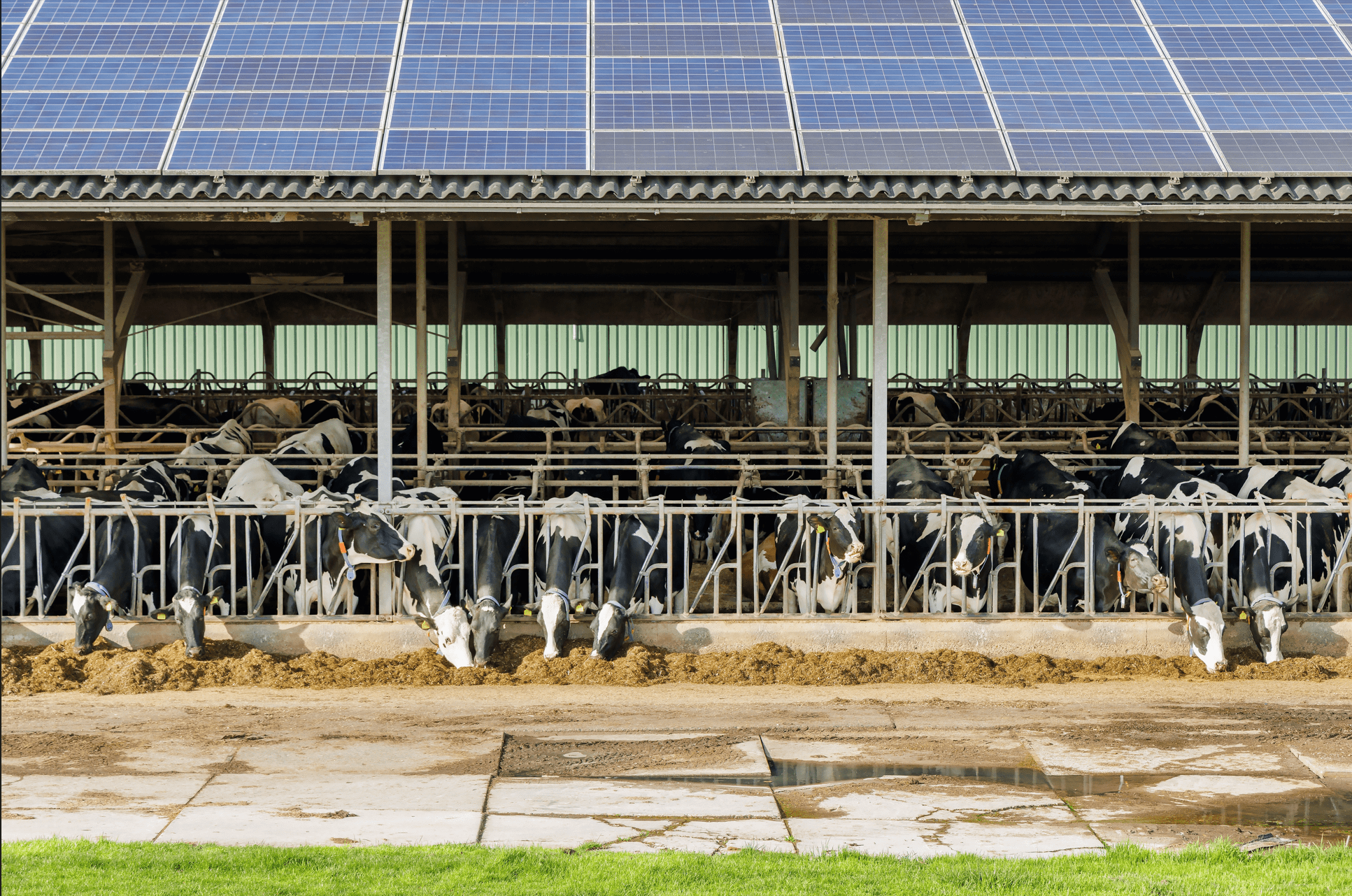
| The Inflation Reduction Act (IRA) and the Infrastructure Investment and Jobs Act (IIJA), provide $151 billion in federal funds to address infrastructure needs across many water policy areas. On the Water Program Portal we track funded programs that fall into at least one of twelve policy areas, including: Aquatic Ecosystems, Dam Improvements, Drinking Water, Drought, Fish Passage, Flooding, Forests & Fire, Indian Water Rights, Ports & Waterways, Restoration, Wastewater Infrastructure, and Water Conservation. |
About $82 billion in funding has been directed to protecting or restoring water-based ecosystems and natural resources. These programs entail the management of aquatic ecosystems, construction or maintenance of fish passages, restoration work, or a combination of the three.
The Restore Native Vegetation on Federal/Non-Federal Land program — a new program created by IIJA with about $100 million in funding — is one example of an ecosystem-protecting program. To maintain the productive and sustainable use of our national forests, the Department of Agriculture has several aims, including reducing severe flooding and erosion, bolstering environmental water quality, and reining in invasive species for the benefit of forest and rangeland vegetation.
A multitude of programs, amounting to about $58 billion, are primarily designed to support infrastructure improvements related to dams, drinking water, floods, ports & water ways, and wastewater. From large infrastructure projects that serves entire regions to the very pipes that deliver water to individual households, these funds will work to maintain the nation’s aging infrastructure and, in some cases, fully replace systems for public health and safety.
A prime example of this work is the Water Infrastructure and Workforce Investment program, which was appropriated $5 million by IIJA to encourage the development of water utility technology, as well as promote the recruitment, training, and retention of a diverse water industry workforce.
The Portal also tracks 40 programs focused on Drought, Flooding, and Forests & Fire. Around $65 billion targets the delivery of environmental benefits, carrying out community wildfire protection plans, and other programs ensuring the health and stability of local environments and communities.
Water Conservation is a large category, representing $27 billion dollars. Efforts to reduce water consumption, often through water efficiency upgrades, are fulfilled through this funding, as well as to mitigate drought and strengthen climate resilience.
$3.7 billion has also been dedicated specifically to settling Indian Water Rights. Indigenous water rights have been a point of contention in federal policy for decades, as the government aims to satisfy federal obligations. For instance, this June the Supreme Court ruled against the Navajo Nation in their effort to secure clean water on reservations in Arizona v. Navajo Nation, deciding that the federal government was not required to secure the Tribe’s access to water sources.
The Biden Administration has consulted with Indigenous communities to incorporate their traditional ecological knowledge into policies and have continued this consultation in dispersing funding through IIJA and IRA. This relationship has borne fruit in the form of many programs, including the Tribal Climate Resilience IRA program and the matching Tribal Resilience IIJA program. Both programs seek to support climate resilience planning in Tribal ecosystems, protect their natural and cultural resources, and ameliorate infrastructure for health and safety.
Finally, the obligatory Other category encapsulates the rest, including research, hydroclimatic monitoring, and data sharing, totaling about $557 million in funding.
Explicit definitions for these categories can be found in Methodology of the Water Program Portal dashboard. These definitions guide the WPP’s categorization of funding to better organize program and awards data for users.
For more information on any of these programs, explore the Water Program Portal. Searching for programs listed here will present details about the program, how much funding and what type of funding is available, who is eligible to apply, which federal agency is administering the program, available Requests for Proposals (RFPs) and funding awards.


